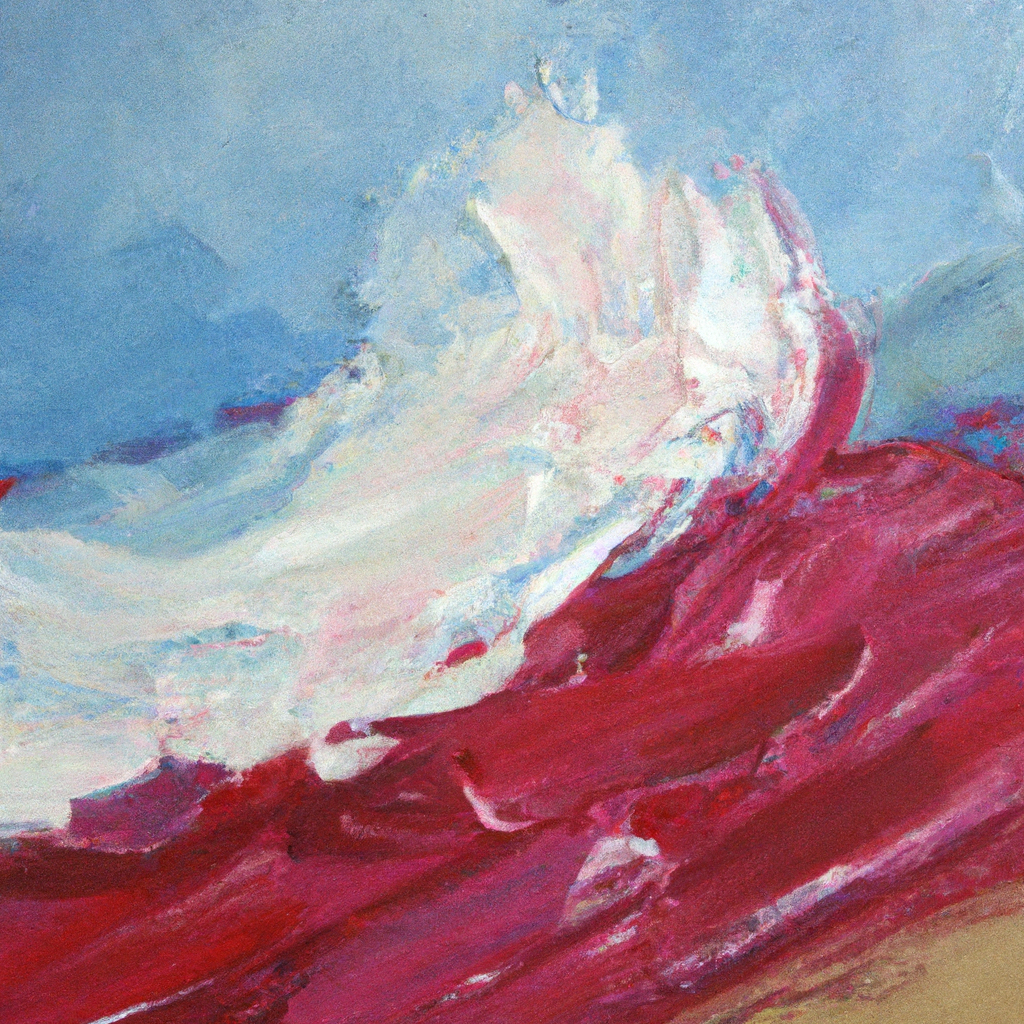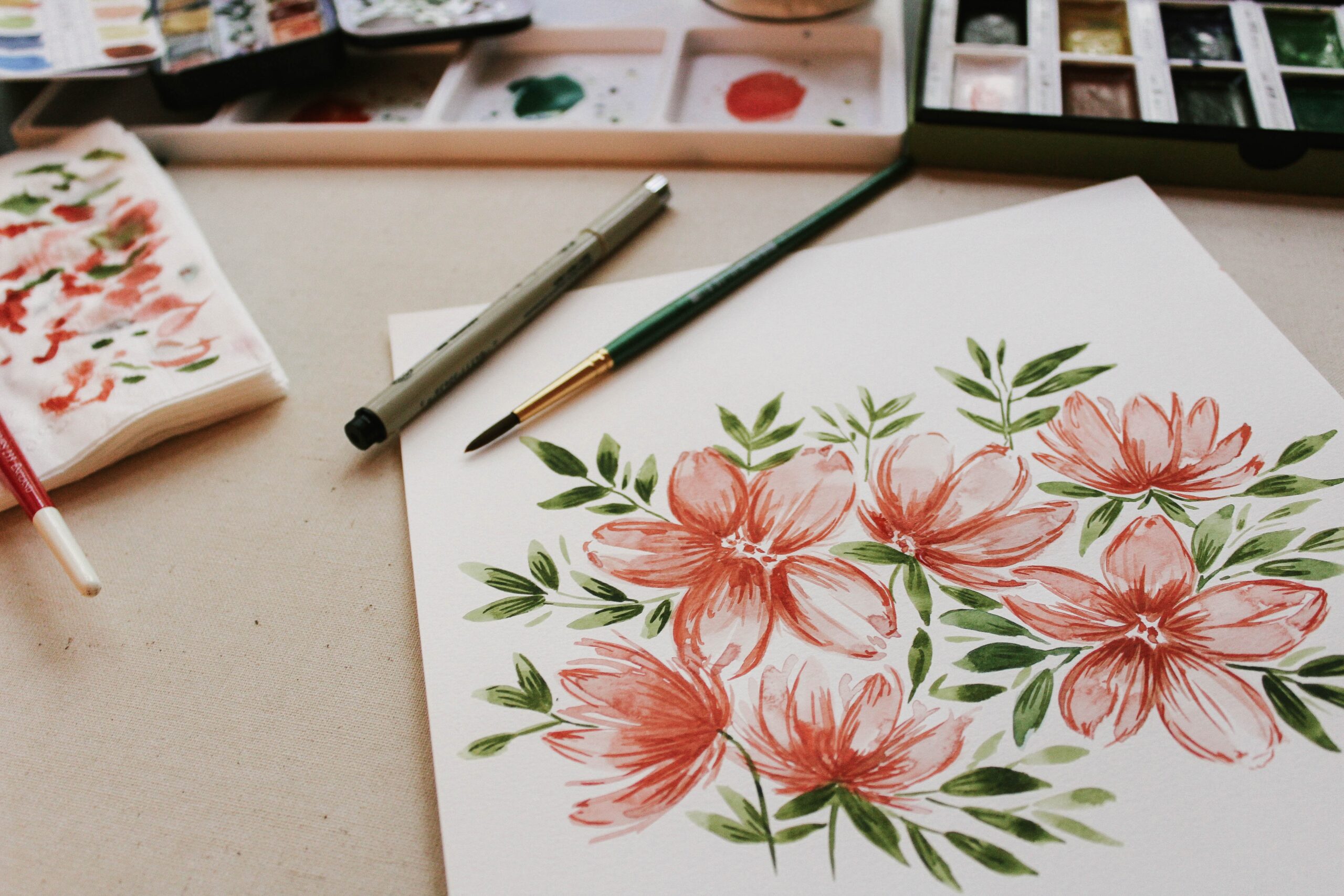If you are an artist who works with gouache paint, you know that it is essential to seal your finished artwork to protect it from smudging, fading, and damage. In this article, you will discover the step-by-step process of sealing gouache paint effectively. From selecting the right sealant to applying it correctly, this guide will provide you with the knowledge and techniques needed to ensure the longevity and preservation of your beautiful artworks.
Prepping the Surface
Choosing the Right Surface
Before sealing your gouache painting, it is important to ensure that you have chosen the right surface to work on. Gouache can be applied to a variety of surfaces, including paper, canvas, wood, and board. Each surface has its own unique characteristics and will require different preparation and sealing techniques. Consider the desired final appearance, the durability of the surface, and the type of application you are using when selecting the surface for your gouache painting.
Cleaning the Surface
To achieve the best results when sealing your gouache painting, it is crucial to start with a clean surface. Remove any dust, dirt, or debris from the surface using a soft brush or dry cloth. For surfaces that are more heavily soiled, you may need to use a damp cloth or a mild detergent to gently clean the surface. Allow the surface to dry completely before moving on to the next step.
Priming the Surface
Priming the surface before sealing your gouache painting can help ensure proper adhesion and longevity of the sealed layers. Apply a layer of primer that is specifically formulated for the surface you have chosen, such as gesso for canvas or wood primer for wooden surfaces. Priming the surface will provide a smooth and even base for your gouache painting and will help prevent the colors from being absorbed unevenly.
Selecting the Right Sealant
Understanding Different Types of Sealants
When it comes to sealing your gouache painting, there are various types of sealants available on the market. The most common options include varnishes, fixatives, and spray sealants. Varnishes are typically used for sealing paintings on canvas, while fixatives are commonly used for works on paper. Spray sealants provide a convenient and even application, making them suitable for various surfaces. Consider the specific needs of your gouache painting, such as its intended use and the level of protection required, when selecting the right sealant.
Considering the Finish You Want
The choice of sealant will also depend on the finish you want to achieve. Some sealants may have a matte, satin, or glossy finish. Matte sealants offer a non-reflective, velvety surface, while glossy sealants provide a high-shine, reflective finish. Satin sealants offer a balance between the two, with a subtle sheen. Consider the overall look you want to achieve with your gouache painting and select a sealant that complements your vision.
Testing the Sealant
Before applying the sealant to your entire gouache painting, it is advisable to conduct a test on a small, inconspicuous area. This will help you determine if the sealant reacts with the colors or causes any unwanted effects. Apply a thin layer of the sealant to the test area and allow it to dry completely. Inspect the area for any changes in color, texture, or appearance. If the results are satisfactory, you can proceed with confidence to seal the entire painting.

This image is property of images.unsplash.com.
Applying the Sealant
Gathering the Necessary Supplies
To ensure a smooth and successful application of the sealant, gather all the necessary supplies beforehand. This includes the chosen sealant, a clean brush, a spray applicator (if using a spray sealant), a roller (if using a rolling technique), and any protective gear, such as gloves or a mask. Having everything prepared will save you time and ensure a seamless application process.
Preparing Your Work Area
Before applying the sealant, it is important to prepare your work area to minimize any potential mess or damage. Lay down a protective covering, such as a drop cloth or newspaper, to protect the surface underneath your painting. Ensure that the area is well-ventilated to allow for proper drying and avoid the inhalation of any fumes. If using a spray sealant, consider working outdoors or in a well-ventilated space to prevent overspray.
Applying the Sealant
The method of applying the sealant will depend on the type chosen. For liquid sealants, such as varnishes or fixatives, you can use a brush or a sponge to carefully apply the sealant in thin, even layers. Make sure to follow the manufacturer’s instructions regarding the application and drying time. If using a spray sealant, hold the applicator about 10-12 inches away from the painting and use sweeping motions to apply an even coat. Allow the sealant to dry completely before considering additional layers or handling the sealed painting.
Sealing Techniques
Brushing
Brushing is a common technique used to apply sealants to gouache paintings. It allows for precise application and control over the thickness of the layers. To achieve optimal results when brushing, it is important to choose the right brush, apply thin layers, and avoid leaving brush strokes.
Spraying
Spraying the sealant can offer a quick and even application, particularly when working with large surfaces or intricate details. There are two main methods of spraying: airbrushing and using a spray sealer. Both techniques require careful control of the spray and proper ventilation to achieve a smooth and uniform finish.
Rolling
The rolling technique is typically used for sealing larger areas or surfaces. It ensures an even distribution of the sealant and minimizes the risk of streaks or brush marks. When using a roller, it is important to choose the right type, prevent bubbles and roller marks, and maintain a consistent application pressure.

This image is property of images.unsplash.com.
Brushing Technique
Choosing the Right Brush
Selecting the appropriate brush for the brushing technique is essential to achieve an even and smooth application of the sealant. For gouache paintings, natural bristle brushes are often recommended as they allow for better control and avoid leaving brush marks. Choose a brush size that suits the size of your painting, ensuring that it covers a sufficient area but still allows for precise application in smaller details.
Applying Thin Layers
When brushing the sealant onto your gouache painting, it is crucial to apply thin layers. Thick layers can result in uneven drying, pooling, and an unnatural appearance. Use a light touch with the brush, allowing the sealant to spread smoothly and evenly. Multiple thin layers can be applied if necessary, ensuring proper drying time between each layer.
Avoiding Brush Strokes
To achieve a flawless finish when brushing the sealant, it is important to avoid leaving visible brush strokes. Use long, smooth strokes when applying the sealant, following the direction of the brush hairs. Try to blend the brush strokes to create an even surface. If brush strokes do appear, gently brush over the surface in the opposite direction to smooth them out before the sealant dries.
Spraying Technique
Airbrushing
Airbrushing is a popular method for applying sealants to gouache paintings, particularly for achieving a smooth, professional finish. It requires an airbrush kit and compressor, which can be purchased or rented. When airbrushing the sealant, it is important to follow the manufacturer’s instructions regarding thinning the sealant and adjusting the air pressure. Start with light coats and build up the layers gradually to achieve the desired result.
Using a Spray Sealer
If you do not have access to an airbrush kit, using a spray sealer is the next best option. Spray sealers are typically available in aerosol cans and offer a convenient and even application. Shake the can well before use and hold it about 10-12 inches away from the painting. Start with a light misting and gradually increase the coverage with additional passes. Make sure to apply the sealant in a well-ventilated area to avoid inhalation of fumes.

This image is property of images.unsplash.com.
Rolling Technique
Choosing the Right Roller
When using the rolling technique to apply the sealant to your gouache painting, it is crucial to select the right roller. Look for a low-nap or foam roller designed specifically for applying sealants. These rollers will provide a smooth and even application without leaving behind undesirable texture or bubbles. Consider the size of your painting when choosing the roller to ensure it covers a sufficient area without creating excessive overlap.
Preventing Bubbles and Roller Marks
To achieve a flawless finish when using a roller, it is important to prevent the formation of bubbles and roller marks. Avoid overloading the roller with sealant and ensure that it is evenly distributed across the surface. Apply the sealant using light pressure, starting from one edge and rolling smoothly towards the other. Roll in one direction only to minimize the risk of visible roller marks. If bubbles or marks do appear, gently roll over the affected area to smooth them out before the sealant dries.
Drying and Curing
Allowing Sufficient Drying Time
After applying the sealant to your gouache painting, it is crucial to allow sufficient drying time. The drying time can vary depending on the type of sealant used, the thickness of the layers, and environmental conditions. Follow the manufacturer’s instructions for the recommended drying time, but it is generally advisable to wait at least 24 hours before considering additional layers or handling the sealed painting.
Curing the Sealant
While the sealant may be dry to the touch after the recommended drying time, it is important to note that it may not be fully cured. Curing refers to the process of the sealant reaching its maximum hardness and durability. Depending on the sealant type, it may take several days to several weeks for the sealant to fully cure. During this time, it is advisable to handle the sealed painting with care and avoid exposing it to any excessive moisture or harsh conditions.

Adding Additional Layers
Assessing the Need for Additional Layers
After the initial layer of sealant has dried and cured, you may choose to add additional layers for added protection or to achieve a desired effect. Assess the appearance and level of protection of your gouache painting and determine if additional layers are necessary. Keep in mind that additional layers may slightly alter the appearance of the colors and finish, so it is important to proceed with caution.
Lightly Sanding between Layers
If you decide to apply additional layers of sealant, it is advisable to lightly sand the surface between each layer. Sanding helps create a smooth and even surface, removes any imperfections or brush strokes, and improves adhesion between layers. Use a fine-grit sandpaper or sanding block and gently sand the surface in a circular motion. Wipe away any dust before applying the next layer of sealant.
Applying Additional Layers
When applying additional layers of sealant, follow the same techniques and methods used for the initial application. Whether brushing, spraying, or rolling, ensure that the layers are thin, even, and smooth. Allow each layer to fully dry and cure before proceeding to the next layer. Be mindful of the overall thickness of the sealant layers to avoid any cracking or uneven drying.
Preventing Yellowing or Discoloration
Selecting a Non-yellowing Sealant
One of the common concerns when sealing gouache paintings is the potential for yellowing or discoloration over time. To prevent this undesirable effect, it is important to choose a sealant that is specifically formulated to be non-yellowing. Look for sealants that are labeled as archival or non-yellowing to ensure long-lasting clarity and color fidelity.
Avoiding Direct Sunlight
Exposure to direct sunlight can accelerate the yellowing or discoloration of sealed gouache paintings. It is important to display or store your sealed painting away from direct sunlight or any other sources of intense UV radiation. Consider placing the painting in a shaded area or behind UV-protective glass to minimize the risk of color changes over time.
Storing the Sealed Painting Properly
When not displaying your sealed gouache painting, proper storage is essential to maintain its quality and prevent yellowing. Store the painting in a cool, dry, and clean environment, away from excessive humidity or temperature fluctuations. Ideally, the painting should be stored flat or upright in a protective sleeve or portfolio to minimize exposure to dust, dirt, and potential damage.




